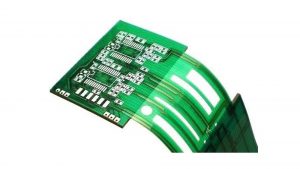primary applications of rigid flex circuits
Rigid flex circuits are the ideal solution for commercial and industrial applications that require powerful components to be packed into small-sized applications. These innovative designs offer the best of both rigid and flex PCBs, providing high reliability of connections and fewer points of failure. In addition, rigid flex circuits can reduce overall product weight and cost by eliminating the need for additional parts like contact crimps and solder joints and connectors.
Rigid-flex technology has a broad range of uses, from consumer products to medical devices and aerospace applications. rigid flex circuits can be used in any electronic device that requires flexible circuits, such as laptops and tablets, mobile phones and digital cameras, and other electronic gadgets that are constantly being moved or swung around.

Additionally, rigid-flex can be used in high-reliability patient-worn monitors that process and display data for doctors to track patients’ health status, such as blood pressure and heart rate monitoring. Rigid-flex can also be found in surgical equipment, such as cauterizing scissors and electronic saws. In fact, rigid flex is even used in spacecraft and satellites to transmit signals between sub-assemblies.
What are the primary applications of rigid flex circuits?
In the world of automotive, aerospace and medical electronics, a rigid-flex circuit can help maximize space and improve performance by replacing wire harnesses that are bulky and prone to damage or failure. These advanced PCBs also deliver greater reliability in harsh environments where vibration and mechanical stress can impact connections, especially when using a dynamic flex design.
For instance, a rigid-flex circuit designed for a high-vibration environment can feature specific material reinforcement to increase its strength and rigidity. It can also incorporate a special copper plating process to ensure that the copper conductors are protected from bending, allowing for reliable transmission of rapid and weak signals in critical applications.
When it comes to assembly, rigid-flex circuits can greatly simplify the process by minimizing human error. Since the circuits can only be installed one way, the risk of making a mistake that damages the flex section is virtually eliminated. This will save manufacturers a significant amount of money over time and provide the ultimate end user with a more durable and reliable product.
To make sure your rigid-flex PCB project is successful, it’s vital to work closely with designers and manufacturing engineers from the start of your product development process. This will ensure that the final rigid-flex PCB meets your exact specifications and is ready for mass production.
To get started, try Cadence PCB solutions – a front to back design tool that enables you to accurately shorten design cycles to hand off to manufacturing with industry standard IPC-2581. With Cadence, you can eliminate errors and improve quality in your design, ensuring that your rigid-flex circuit will be manufactured efficiently and to the highest standards of quality and durability. To learn more about the potential of your rigid-flex design, contact a professional today. We are here to help you turn your idea into a reality. Click the button below to request a quote.